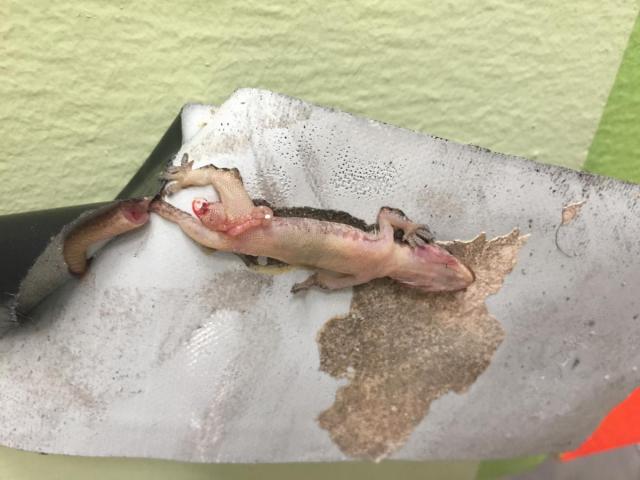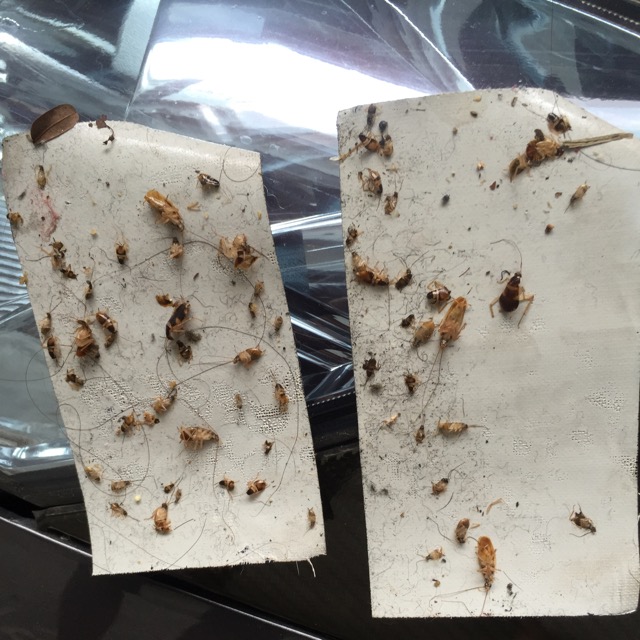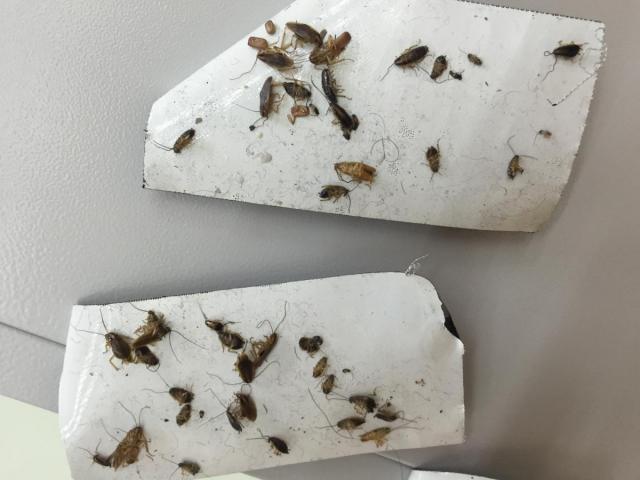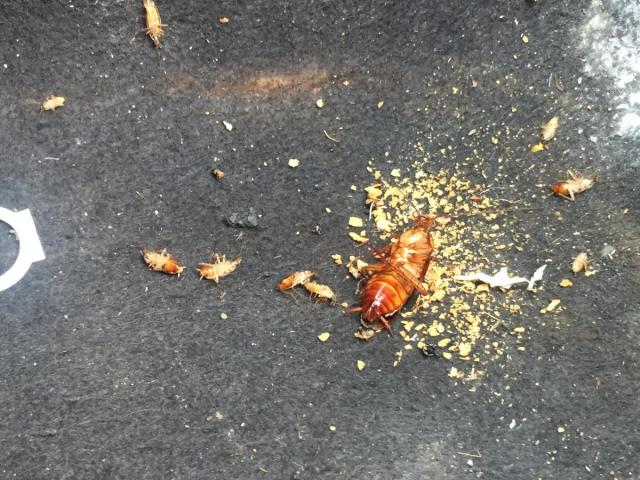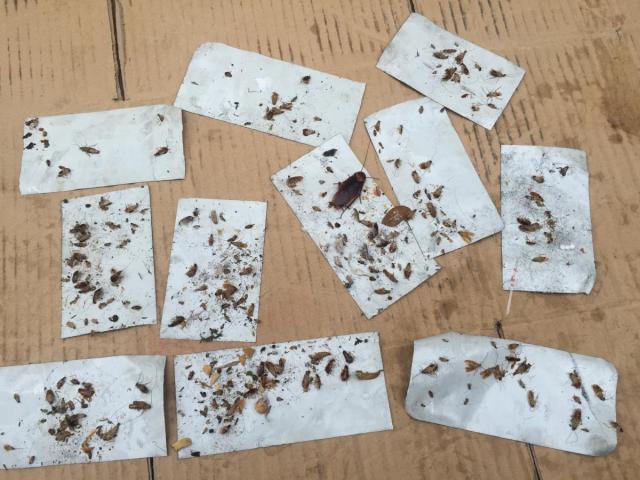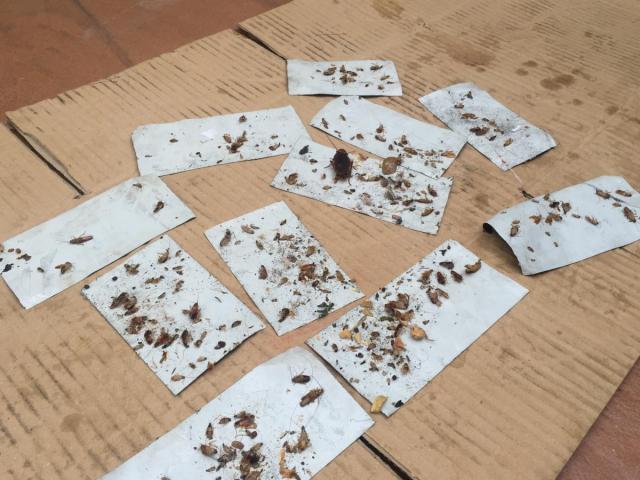Search the Community
Showing results for tags 'eating'.
-
Some sources aren't as healthy as you think For years we’ve been fed the line that a diet of red meat, supplements and protein shakes can have real health benefits. If only it were that simple. A recently published by researchers at the University of Eastern Finland, who tracked 2,400 middle-aged men over the course of 22 years, reported that a high-protein diet resulted in a 49% greater risk of heart failure. Many large, long-term population studies have also found that people who consume large amounts of protein, especially in the form of red and processed meat, are more likely to be obese or develop type 2 diabetes, cardiovascular disease and colon cancer. Thomas Sanders, professor of nutrition and dietetics at King’s College London, says the idea of a protein gap in our diet was first broached by a professor at MIT, Nevin Scrimshaw, in the 1960s. He claimed that the protein that comes from plant sources such as vegetables was deficient in vital amino acids and that we therefore needed to eat more animal protein. Perhaps one of the biggest problems with high-protein diets is that the excess protein typically indicates an imbalanced diet, as it comes with a deficiency in another crucial food source. “A balanced diet is one that meets all your nutrient requirements and prevents chronic disease,” Sanders says. “High-protein diets are often low in fibre, and we think colorectal cancer and obesity are linked to low intakes of fibre. There has been so much negativity about fat over the years, but you see in the big population studies that weight gain typically occurs when a big proportion of the diet comes from animal protein.” https://www.theguardian.com/lifeandstyle/2018/jun/04/are-you-eating-too-much-protein?utm_source=pocket&utm_medium=email&utm_campaign=pockethits
-
https://www.straitstimes.com/asia/east-asia/south-korea-reports-first-death-from-brain-eating-amoeba SEOUL - South Korea reported its first case of infection from Naegleria fowleri, commonly referred to as “brain-eating amoeba”, health authorities said on Monday. The Korea Disease Control and Prevention Agency (KDCA) confirmed that a Korean national in his 50s had died after returning from Thailand. The man came back to South Korea on Dec 10 after a four-month stint there. He was admitted to a hospital the next day and died Wednesday last week. The KDCA said it had conducted genetic tests on three types of pathogens causing Naegleria fowleri to confirm the cause of his death. The testing confirmed the gene in the man’s body was 99.6 per cent similar to that found in a meningitis patient reported abroad. This is the first known infection from the disease in South Korea. The first case was reported in Virginia in 1937. Naegleria fowleri is an amoeba, or a single-celled living organism, that lives in soil and warm freshwater, such as hot springs, lakes and rivers, across the globe. The amoeba enters the body by inhalation through the nose and travels to the brain. The initial symptoms might include headache, fever, nausea or vomiting, and later symptoms can lead to severe headaches, fever, vomiting and a stiff neck, according to the KDCA. The incubation period for Naegleria fowleri is usually from two to three days and up to 15 days at most. Although human-to-human transmission of Naegleria fowleri is impossible, the KDCA asked residents to refrain from swimming in regions and neighbourhoods where the disease broke out. It added that the risk of infection was not high, but most cases start through swimming. “To prevent the infection of Naegleria fowleri, we recommend avoiding swimming and leisure-related activities and using clean water when travelling to areas where cases have been reported,” said Dr Jee Young-mee, who heads the KDCA, via a press release. The KDCA said clean water refers to any type of water that has not been contaminated, but people cannot be infected with Naegleria fowleri by drinking contaminated water. It added that the highest risk is when the water temperature rises during the summer. A total of 381 cases of Naegleria fowleri have been reported around the globe as of 2018, including in India, Thailand, the United States, China and Japan. The US alone reported 154 infections from 1962 through 2021. According to the US Centres for Disease Control and Prevention, only four people survived, with a death rate of over 97 per cent. THE KOREA HERALD/ASIA NEWS NETWORK Naegleria fowleri is an amoeba that lives in soil and warm freshwater across the globe. PHOTO: SCREENGRAB FROM CENTERS FOR DISEASE CONTROL AND PREVENTION (CDC)/YOUTUBE
-
-Have you notice cockroach, fleas, flies, mosquitoes and small crawling insect in your car? Well then it's time to fumigate your ride? Our fumigation comprise of ingredient like pyrethroid & exothermic substance which capable of evolving heat on contact with water emitting smoke to all tight areas of your car to force those insect out from their hideout. 100% safe as it is -Water Base -Non Aerosol Product -Safe against fire -Big penetration -Release Delay -No oily residue -Flushing out effect Like us on Facebook "New Age Polish" Contact us at 81610131 for an appointment now!
- 40 replies
-
- fumigation
- pest
-
(and 8 more)
Tagged with:
-
https://www.youtube.com/watch?v=wkLqESSnkbI Sea weed can be surprisingly tough and don't break easily, holding the ball together preventing it from breaking up. Worst, out can stick to your throat preventing the movement. So if go eat sushi with small children, ALWAYS cut or remove the seaweed wrapping, children matt try to swallow..
- 12 replies
-
- 2
-

-
- food safety child safety
- careful
-
(and 2 more)
Tagged with:
-
8 Ridiculous Myths About Eating Meat Kris Gunnars, Authority Nutrition Flickr/snekse There is a lot of nonsense in nutrition. One of the worst examples is the constant propaganda against meat consumption. Here are 8 ridiculous myths about meat consumption and health. 1. Meat Rots in Your Colon Some people claim that meat doesn’t get digested properly and “rots” in your colon. This is absolute nonsense, probably invented by dishonest vegans in order to scare people away from eating meat. What happens when we eat meat, is that it gets broken down by stomach acid and digestive enzymes. In the small intestine, the proteins are broken down into amino acids and the fats are broken down into fatty acids. After that, they get absorbed over the digestive wall and into the bloodstream. There’s nothing left to “rot” in your colon.If you want to know what really “rots” in your colon, it’s indigestible plant matter (fiber)… from vegetables, fruits, grains and legumes. The human digestive system doesn’t have the enzymes necessary to break downfiber, which is why it travels all the way to the colon. There, it gets fermented (rots) by the friendly bacteria in the intestine, which turn it into nutrients and beneficial compounds like the short-chain fatty acid butyrate (1). This is what keeps the friendly bacteria alive and many studies are showing that feeding these bacteria properly is incredibly important for optimal health (2, 3). So, meat doesn’t rot in the colon. Plants do… and this is actually a good thing. Bottom Line: The nutrients in meat are broken down and absorbed way before they reach the colon. However, fiber from plants does ferment (“rot”) in the colon, which is actually a good thing as it feeds the friendly bacteria. 2. Meat Is High in Harmful Saturated Fat and Cholesterol One of the main arguments against meat, is that it tends to be high in both saturated fat and cholesterol. But this really isn’t a cause for concern, because new science has shown both of them to be harmless. Despite being seen as something to be feared, cholesterol is actually a vital molecule in the body. It is found in every cell membrane and used to make hormones. The liver produces large amounts of it to make sure we always have enough. When we get a lot of cholesterol from the diet, the liver just produces less of it instead, so the total amount doesn’t change much (4, 5). In fact, in about 70% of people, cholesterol in the diet has negligible effects on cholesterol in the blood (6). In the other 30% (termed hyper-responders), there is a mild elevation in LDL cholesterol, but HDL (which is protective) also goes up (7, 8). The same is true with saturated fat, it also raises HDL (the “good”) cholesterol (9,10). But even when saturated fat and/or cholesterol cause mild increases in LDL, this is not a problem because they change the LDL particles from small, dense LDL (very bad) to Large LDL, which is protective (11, 12). Studies show that people who have mostly large LDL particles have a much lower risk of heart disease (13, 14). Therefore, it is not surprising to see that in population studies that include hundreds of thousands of people, saturated fat and cholesterol are not associated with an increased risk of heart disease (15, 16). In fact, some studies show that saturated fat is linked to a reduced risk of stroke, another very common cause of death and disability (17). When they put this to the test in actual human experiments, making people cut saturated fat and replacing it with “heart healthy” vegetable oils (which happen to lower cholesterol), it actually increases the risk of death (18). Bottom Line: It is true that meat tends to be high in saturated fat and cholesterol, but this is not a cause for concern because they do not have adverse effects on blood cholesterol or increase the risk of heart disease. 3. Meat Causes Heart Disease and Type 2 Diabetes Strangely enough, meat is often blamed for Western diseases like heart disease and type 2 Diabetes. Heart disease didn’t become a problem until the early 20th century and type 2 diabetes only a few decades ago. These diseases are new… but meat is an old food. Humans and pre-humans have been eating meat for millions of years (19). Blaming an old food for new health problems makes absolutely no sense. Fortunately, we do have two very large, very thorough studies that can put our minds at ease. In a massive study published in the year 2010, researchers pooled data from 20 studies that included a total of 1,218,380 individuals. They found no link between consumption of unprocessed red meat and heart disease or diabetes (20). Another major study from Europe that included 448,568 individuals found no link between unprocessed red meat and these diseases (21). However, both of these studies found a strong increase in risk for people who ateprocessed meat. For this reason, it is very important to make a distinction between the different types of meat. Many studies apparently showing that “red meat” is harmful didn’t adequately make the distinction between processed and unprocessed meat. Processed foods in general are pretty awful… this isn’t just true of meat. Bottom Line: Many massive studies have examined the relationship between meat consumption, heart disease and diabetes. They found a strong link for processed meat, but no effect for unprocessed red meat. 4. Red Meat Causes Cancer One common belief is that meat, especially red meat, causes cancer. This is where things get a bit more complicated. It is true that processed meat is associated with an increased risk of cancer, especially colon cancer (22). But when it comes to unprocessed red meat, things aren’t as clear. Although several studies suggest that even unprocessed red meat can raise the risk of cancer, review studies that pool the data from many studies at a time show a different picture. Two review studies, one that looked at data from 35 studies and the other from 25 studies, found that the effect for unprocessed red meat was very weak for men and nonexistent for women (23, 24). However… it does appear that the way meat is cooked can have a major effect on its health effects. Several studies show that when meat is overcooked, it can form compounds likeHeterocyclic Amines and Polycyclic Aromatic Hydrocarbons, which have been shown to cause cancer in test animals (25). There are several ways to prevent this from happening… such as choosing gentler cooking methods and always cutting away burned or charred pieces. So the answer is not to avoid red meat, but to make sure not to burn it. Keep in mind that overheating can cause harmful compounds to form in many other foods. This is NOT exclusive to meat (26). Bottom Line: The link between unprocessed red meat and cancer is very weak in men and nonexistent in women. This may depend on the way meat is cooked, because overheating can form carcinogens. 5. Humans Are Naturally Herbivores and Not “Designed” For Meat Consumption Some vegans claim that humans aren’t “designed” to eat meat. They say that humans are naturally herbivores like our primate ancestors. However… this is completely false. Humans and pre-humans have been eating meat for a very long time and our bodies are well adapted to meat consumption (27, 28). Our digestive systems really don’t resemble those of herbivores at all. We have short colons, long small intestines and lots of hydrochloric acid in the stomach to help break down animal protein (29). The length of different parts of our digestive system is somewhere in between the lengths typical for both carnivores and herbivores, indicating that humans are “designed” to be omnivores (30). It is also believed that our consumption of animal foods helped drive the evolution of our large brains, which set us apart from any other animal on earth (31). Humans function best eating both animals and plants. Period. Bottom Line: Humans are well equipped to make full use of the nutrients found in meat. Our digestive system reflects a genetic adaptation to an omnivorous diet, with animal foods as a major source of calories. 6. Meat is Bad For Your Bones Many people seem to believe that protein is bad for the bones and can lead to osteoporosis. The theory goes like this… we eat protein, which increases the acid load of the body, then the body moves calcium from the bones and into the bloodstream to neutralize the acid. There are in fact some short-term studies to support this. Increasing protein does lead to increased calcium loss from the body (32). However, this short term effect does not appear to persist because the long-term studies show that protein actually has beneficial effects on bone health (33). There is overwhelming evidence that a high protein diet is linked to improved bone density and a lower risk of osteoporosis and fractures in old age (34, 35, 36). This is a great example of where blindly following the conventional wisdom in nutrition will lead to the exact opposite result. 7. Meat is Unnecessary It is often claimed that meat is unnecessary for health. This is actually kind of true… most of the nutrients in it can be found in other animal foods. But just because we can survive without it, it doesn’t mean that we should… quality meat hasmany nutrients that are good for us. This includes quality protein, vitamin B12, creatine, carnosine and various important fat-soluble vitamins, which vegans and vegetarians are often lacking in. Whole foods like meat contain way more than just the standard vitamins and minerals that we’re all familiar with it. There are literally thousands of trace nutrients in there… some of which science has yet to identify. The fact is, humans evolved eating meat and evolution designed our bodies with these nutrients in mind. They are an essential part of the immensely complex biological puzzle. Can we live without meat? Sure… but we won’t reach optimal health, making use of all the beneficial nutrients that nature has provided us with. Although we can survive without meat, the same could be said of most other food groups… including vegetables, fruits, legumes, fish, eggs, etc. We just eat more of something else instead. Quality meat is pretty close to being the perfect food for humans. It contains most of the nutrients we need. There is even a study in the literature where two guys ate nothing but meat and organs for a year and remained in excellent health (37). Of course, not all meat is the same. The best meat comes from animals raised on pasture, fed the types of foods they would eat in nature. Unprocessed meat from properly raised, properly fed animals (like grass-fed beef) has a much better nutrient profile (38, 39). 8. Meat Makes You Fat Meat is often believed to be fattening. This seems to make sense on the surface because most meat is pretty high in fat and calories. However, meat also happens to be one of the best sources of highly bioavailable protein. Protein is the most weight loss friendly macronutrient, by far. Studies show that a high protein diet can boost metabolism by up to 80 to 100 calories per day (40, 41). There are also studies showing that if you increase your protein intake, you automatically start eating less of other foods instead (42). Several studies have found that by increasing the amount of protein in the diet, people automatically cut calorie intake by several hundred calories per day, putting weight loss on “autopilot” (43). Eating more protein also tends to favour increased muscle mass. Muscle is metabolically active and burns a small amount of calories around the clock (44). Also, let’s not forget that low-carb and paleo diets, which tend to be high in meat, lead to significantly more weight loss than diets that are lower in meat (45, 46). If anything, the more you eat of high quality meat (and less of other foods instead), the easier it should be for you to lose weight. 9. Anything Else? Are there any other myths about meat that you keep seeing pushed? Feel free to add to the list in the comments! Read more: http://authoritynutrition.com/8-ridiculous-myths-about-meat-and-health/#ixzz2uZfebmaT
- 57 replies
-
- vegetarian
- ridiculous
-
(and 3 more)
Tagged with:
-
Just doing a bit of informal research...and wanna ask some questions a) Do you like big size cookies (biscuits) - say around 10-12cm in Diameter - 15-20 mm thick? b) Do you buy any snacks like cookies, cereal bars or similar from convenience stores? c) What is your favourite "cookie" / cake (eg do you buy Polar Cakes) from convenience store? d) If you do eat this sort of snack / cookie, what do you think is a reasonable price to for such a cookie?
- 72 replies
-
- 1
-

-
- nom nom nom
- cookie monster
-
(and 4 more)
Tagged with:
-
Source: http://www.japantimes.co.jp/news/2016/05/08/asia-pacific/offbeat-asia-pacific/forbidden-fruit-china-bans-erotic-banana-eating-live-streams/#.V1Gg-Hxf1aQ Didn't know People can go bananas over bananas...lol
-
Hi Guys, noticed farmed salmon and deep sea tuna have been getting a lot of bad press. Farmed Salmon = carcinogenic chemicals ladened Deep Sea Tuna = high mercury content Any experts here who can advise on the risks of these food and if the popular variety sold locally falls into these categories?
-
6 Reasons You Should Be Eating More Eggs Kris Gunnars, Authority Nutrition Flickr/.Larry Page Eggs are so nutritious that they’re often referred to as "nature's multivitamin." They also have unique antioxidants and powerful brain nutrients that many people are deficient in. Here are six reasons why eggs are among the healthiest foods on the planet. 1. Whole Eggs Are Among The Most Nutritious Foods on Earth One whole egg contains an amazing range of nutrients. Just imagine… the nutrients in there are enough to turn a single fertilized cell into an entire baby chicken. Eggs are loaded with vitamins, minerals, high quality proteins, good fats and various other lesser-known nutrients. One large egg contains (1): Vitamin B12 (Cobalamin): 9% of the RDA. Vitamin B2 (Riboflavin): 15% of the RDA. Vitamin A: 6% of the RDA. Vitamin B5 (Pantothenic Acid): 7% of the RDA. Selenium: 22% of the RDA. Eggs also contain small amounts of almost every vitamin and mineral required by the human body… including calcium, iron, potassium, zinc, manganese, Vitamin E, Folate and many more. A large egg contains 77 calories, with 6 grams of quality protein, 5 grams of fat and trace amounts of carbohydrates. It’s very important to realize that almost all the nutrients are contained in the yolk, the white contains only protein. 2. Eggs Improve Your Cholesterol Profile and do NOT Raise Your Risk of Cardiovascular DiseaseBottom Line: Whole eggs are incredibly nutritious, containing a very large amount of nutrients compared to the calorie load. The nutrients are found in the yolks, while the whites are mostly protein. The main reason people have been warned about eggs is that they’re loaded with cholesterol. One large egg contains 212 mg of cholesterol, which is a LOT compared to most other foods. However, just because a food contains cholesterol doesn’t mean that it will raise the bad cholesterol in the blood. The liver actually produces cholesterol, every single day. If you eat cholesterol, then your liver produces less. If you don’t eat cholesterol, then your liver produces more of it. The thing is, many studies show that eggs actually improve your cholesterol profile. Eggs tend to raise HDL (the "good") cholesterol and they tend to change the LDL (the “bad”) cholesterol to a large subtype which is not associated with an increased risk of heart disease (2, 3, 4). One study discovered that 3 whole eggs per day reduced insulin resistance, raised HDL and increased the size of LDL particles in men and women with metabolic syndrome (5). Multiple studies have examined the effects of egg consumption on the risk of cardiovascular disease and found no association between the two (6, 7, 8, 9). However, some studies do show an increased risk of cardiovascular disease indiabetic patients. This needs further research though and probably doesn’t apply on a low-carb diet, which can in many cases reverse type II diabetes (10, 11, 12). 3. Eggs Are Loaded With Choline, an Important Nutrient For The BrainBottom Line: Studies show that eggs actually improve the cholesterol profile. They raise HDL (the good) cholesterol and increase the size of LDL particles, which should lower the risk of heart disease. Choline is a lesser-known nutrient that is often grouped with the B-complex vitamins. Choline is an essential nutrient for human health and is needed for various processes in the body. It is required to synthesize the neurotransmitter acetylcholine and is also a component of cell membranes. A low choline intake has been implicated in liver diseases, cardiovascular disease and neurological disorders (13). This nutrient may be especially important for pregnant women. Studies show that a low choline intake can raise the risk of neural tube defects and lead to decreased cognitive function in the offspring (14). In a dietary survey in the U.S. from 2003-2004, over 90% of people ate less than the daily recommended amount of choline (15)! The best sources of choline in the diet are egg yolks and beef liver. One large egg contains 113 mg of Choline. 4. Eggs Contain High Quality Proteins With a Perfect Amino Acid ProfileBottom Line: Choline is an essential nutrient that 90% of people in the U.S. aren’t getting enough of. Egg yolks are an excellent source of choline. Proteins are the main building blocks of the body and serve both structural and functional purposes. They consist of amino acids that are linked together, kind of like beads on a string, then folded into complex shapes. There are about 21 amino acids that the body uses to build its proteins. The body can not produce 9 of these amino acids, which are deemed as "essential" and must be gotten from the diet. The quality of a protein source is determined by its relative amounts of these essential amino acids. A protein source that contains all of them in the right ratios is a good source of protein. Eggs are among the best sources of protein in the diet. In fact, the biological value (a measure of protein quality) is often evaluated by comparing it to eggs, which are given the perfect score of 100. 5. Eggs Are Loaded With Lutein and Zeaxanthin, Which Protect The EyesThere are two antioxidants in eggs that can have powerful protective effects on the eyes. They are called Lutein and Zeaxanthin, both found in the yolk. Lutein and Zeaxanthin tend to accumulate in the retina, the sensory part of the eye. These antioxidants significantly reduce the risk of Macular Degeneration and Cataracts, which are among the leading causes of vision impairment and blindness in the elderly (16, 17, 18). In one study, eating 1.3 egg yolks per day for 4.5 weeks increased blood levels of Zeaxanthin by 114-142% and Lutein by 28-50% (19). 6. Eggs For Breakfast Can Help You Lose Body FatEggs contain only trace amounts of carbohydrates, but plenty of protein and fat. They score very high on a scale called the Satiety Index, which is a measure of how much foods contribute to satiety (20). For this reason, it is not surprising to see studies where eating eggs for breakfast leads to fat loss. In one study, 30 overweight or obese women consumed either a breakfast of eggs or a breakfast of bagels. Both breakfasts had the same amount of calories. The women in the egg group felt more full and ate less calories for the rest of the day and for the next 36 hours (21). In another study that went on for 8 weeks, eating eggs for breakfast lead to significant weight improvements compared to the same amount of calories from bagels. The egg group (22): Lost 65% more body weight. Lost 16% more body fat. Had a 61% greater reduction in BMI. Had a 34% greater reduction in waist circumference (a good marker for the dangerous abdominal fat). Not All Eggs Are The SameIt’s important to keep in mind that not all eggs are created equal. Hens are often raised in factories, caged and fed grain-based feed that alters the final nutrient composition of the eggs. It is best to buy Omega-3 enriched or pastured eggs, they are more nutritious and healthier. However, conventional supermarket eggs are still a good choice if you can’t afford or don't have access the others. Take Home MessageTo top things off, eggs are cheap, taste awesome and go with almost any food. Eggs really are an egg-ceptional superfood. Read more: http://authoritynutrition.com/6-reasons-why-eggs-are-the-healthiest-food-on-the-planet/?#ixzz2tuw0owRv
-
Got people eat puffer fish, but must be correctly prepared! http://www.nzherald.co.nz/world/news/article.cfm?c_id=2&objectid=11348235&ref=NZH_Tw Eleven members of the same family are in hospital after unwittingly cooking and eating a poisonous pufferfish for dinner. The Souza family, from Rio de Janerio, were given the fish by a family friend who had recently returned from a sea fishing expedition off Dubque de Caxias, on the Brazilian coast. Unbeknownst to anyone, the present was a deadly pufferfish - which contains a toxin 1,200 times more lethal than cyanide, a drop of which can kill in 24 hours. Only seconds after taking their first bite members of the family began to vomit, before losing feeling in their face, arms and legs. Most of the victims, including children aged three to five, were paralysed before they could even reach a car to transport them to hospital. "My brother-in-law was the same. He didn't even make it out the door. We had to carry them out and rush them to hospital in a car," she said, explaining they had invited the entire family round because the fish looked so "tasty". Grandmother Maria do Carmo said: "We had no idea it was a pufferfish. They're all in a critical condition. My grandson, my daughter, and my son-in-law, they are all in hospital. We're praying for a miracle. "We put the fish on the table in the yard outside and everyone dived in. They were all saying how delicious it was. I didn't eat it because I was waiting until everyone had tried it." Pufferfish, or 'Fugu', is a delicacy in Japan. It is strictly controlled and only chefs who have qualified after three years training can prepare a meal featuring the fish. Statistics from the Tokyo Bureau of Social Welfare and Public Health indicate 20 to 44 incidents of 'fugu' poisoning every year between 1996 and 2006 in Japan - however a single incident can hide multiple casualties. There is no known cure for the poison, which paralyses the body while leaving the victim, who gradually suffocates, awake. Victims are hospitalised and their stomachs emptied before being fed activated charcoal to bind the toxin. They are also put on life support until the poison wears off.
- 11 replies
-
- puffer fish
- eat
- (and 6 more)
-
Conservation at work. Total banned areas now total 18. It is to prevent parking and traffic problems from worsening. http://www.channelnewsasia.com/news/singapore/no-new-eating-houses-at/1409976.html SINGAPORE: The Urban Redevelopment Authority (URA) has named seven new locations where additional eating houses will not be allowed to be set up so as to prevent the existing parking and traffic problems in the areas from worsening. This brings the number of places where new eating houses will not be approved to 18. The new sites deemed to be problematic traffic areas are: Changi Road, which include Jalan Eunos / Still Road to Jalan Kembangan and Frankel Avenue Upper Paya Lebar Road from Lorong Ah Soo to Paya Lebar Crescent Bukit Timah Road, at Wilby Road to Elm Avenue and Anamalai Avenue to Fourth Avenue Sembawang Road - from Mandai Road to Transit Road Kampong Bahru Road to Sporttiswoode Park Road Kampong Glam Jalan Riang in the Braddell Heights area. The URA said it has worked with the Land Transport Authority (LTA) to assess the existing traffic and parking situations as part of their periodic reviews. The agencies also took into account the concerns of residents, as well as existing tenants who want a balance of businesses in the area. Mr Saeid Labbafi, chairman of the Kampong Glam Association, said: "What the Kampong Glam retailers wish to see is a balance between the businesses. We do know that this place is place targeted for conservation, one of the historical places in Singapore. The more time passes, the more the place becomes unique because of its rarity in the area and because of its cultures, and all this thanks to lot of help from the government. We wish to see a balance of the businesses here." For proposed eating areas outside the existing list where food establishments can no longer be set up, URA said it will evaluate them with the LTA, for consideration of approval under its planning guidelines.
-
Our family love Japanese Food, we will think twice after seeing this Teppanyaki fire hazard hurting customer sitting in front of the flying pan http://www.youtube.com/watch?v=PK979fWA0qs
- 46 replies
-
- 3
-

-
- teppanyaki risk
- risk
-
(and 2 more)
Tagged with:
-
Imagine being able to devour messy foods like buffalo wings, cheese fries and potato chips without getting your fingers dirty and creating a mess. What if we told you there’s a way to make that happen? They’re called Trongs, and they’re here to help you successfully knock out that batch of ribs without looking up from your plate. There’s no reason the best foods in the world should be the most annoying to eat. Thanks to these incredibly weird, finger-condom-looking things, we don’t have to worry about that anymore. You can buy a 12-pack for $19.95.
- 52 replies
-
- 3
-

-
- amdk
- chicken wings
- (and 6 more)
-
http://www.asiaone.com/static/multimedia/g...ry/130628_cane/ A young girl quietly endured being repeatedly hit by a stick and kicked off a bench in public by her father -- just because she did not want eat. A video of the abuse has been circulating online, sparking outrage among netizens. While many criticised both the father and the person who filmed the incident, they also praised bystanders who tried to intervene. One man dressed in a white shirt could be seen confronting the father and helping the girl up. "My heart breaks for the child. The physical signs will fade but the psychological trauma will stay with that kid forever," commented one netizen. All child beaters should have their freaking fists shoved up their arse!!!
-
From Yahoo : US man dies minutes after winning cockroach-eating contest London, Oct 9 (ANI): A man from Florida, who won a cockroach-eating contest, died moments after he downed off more live bugs than around 30 other contestants. Edward Archbold, 32, became unwell shortly after the contest ended and he collapsed in front of the venue, the Ben Siegel Reptile Store in Deerfield Beach, Florida, the Mirror reported. According to the police, none of the other contestants became ill. Archbold was taken to a hospital where he was pronounced dead. Currently, authorities are waiting for port-mortem results to determine the cause of death. "We feel terribly awful," store owner Ben Siegel, who added that Archbold did not appear to be sick before the contest, said. "He looked like he just wanted to show off and was very nice," he said, adding that Archbold was "the life of the party." A statement from Siegel's lawyer said that all the contestants signed waivers "accepting responsibility for their participation in this unique and unorthodox contest." (ANI) link: http://sg.news.yahoo.com/us-man-dies-minut...-075344171.html He signed his own death warrant ....
-
I was watching a flock of birds walking on a grass patch. Their heads kept pecking at the grass every second or so. they seem to be eating with each peck. are there really so many things in the grass to eat??? they cant be eating sand or dirt right?
-
what is ur most frequented type of place when eating out? what is ur decision based on? price? location? food type?
- 7 replies
-
- most
- frequented
-
(and 3 more)
Tagged with:
-
[extract] I was taking bus 15 one day. The bus is pretty new as evident from the interior. As I looked around cabin, I felt that something was missing. After thinking for a while, it came to my mind that the
- 1 comment
-
- discussions
- other news
-
(and 7 more)
Tagged with:
-
A most horrific way to die - to be eaten alive by a predator. This reminded me of the tragic death of Timothy Treadwell and his girlfriend who were both attacked and eaten alive by Grizzlies some time ago. Imagine the mother's anguish and despair to listen to her daughter's gruesome death... Geesh, what a way to die... http://news.ninemsn.com.au/world/8286927/m...bs-eat-daughter Mother hears bear, cubs eat daughter 06:00 AEST Thu Aug 18 2011 A teenager who was eaten alive by a brown bear and her cubs in Russia called her mother and gave a horrific running commentary of the attack, telling her "the bear is eating me!" Olga Moskalyova, 19, made three calls to her mother during the attack, which lasted more than an hour and also claimed the life of her stepfather, Igor Tsyganenkov, the Daily Mail reports. The trained psychologist, who had been camping in a forest in the extreme east of Siberia, phoned for help after she saw the mother bear attack her stepfather, breaking his neck and crushing his skull. Tatiana Tsyganenkov initially thought her daughter was joking when she screamed: "Mum, the bear is eating me! Mum, it's such agony!" "Then I heard the real horror and pain in Olga's voice, and the sounds of the bear growling and chewing," Mrs Tsyganenkov said. But Mrs Tsyganenkov could only listen helplessly as her daughter described the attack, telling her the mother the bear had brought its three cubs to feed on her. The teenager made her final call about an hour after the first, telling her mother she loved her and no longer felt any pain before the phone cut out. Police arrived at the scene with Mr Tsyganenkov's brother half-an-hour later to find the mother bear still devouring her dead victims, who were buried this week, and hunters were sent to destroy the animals.
-
- Cannot eat lunch before boarding taxi? - Put longan in mouth, never eat but can still chat on the phone? - She has zero language competancy in English?
-
fellow drivers... see news today.. you may kena summon if you are driving and eating at the same time. So.. be tactical and be safe. (next time.. i think if you drive and place ur hands on ur gf's thighs, may also kena)





